CUPRA Tavascan vs Ford Transit Bus – Differences & prices compared
Compare performance, boot space, consumption and price in one view.
Find out now: which car is the better choice for you – CUPRA Tavascan or Ford Transit Bus?
The CUPRA Tavascan (SUV) comes with a Electric engine and Automatic transmission. In comparison, the Ford Transit Bus (Bus) features a Diesel engine with Automatic transmission.
When it comes to boot capacity, the CUPRA Tavascan offers 540 L, while the Ford Transit Bus provides 0 L – depending on how much space you need. If you’re looking for more power, decide whether the 340 HP of the CUPRA Tavascan or the 150 HP of the Ford Transit Bus suits your needs better.
In terms of consumption, the values are 15.20 kWh per 100 km for the CUPRA Tavascan, and 9.40 L for the Ford Transit Bus.
Price-wise, the CUPRA Tavascan starts at 45600 £, while the Ford Transit Bus is available from 50500 £. Compare all the details and find out which model fits your lifestyle best!
CUPRA Tavascan
The CUPRA Tavascan represents a bold step forward in the realm of electric vehicles with its striking design and dynamic performance. As the marque's first all-electric SUV, it combines athletic aesthetics with a commitment to sustainability. Inside, the vehicle offers a sophisticated and connected driving experience, ensuring that technology and comfort go hand in hand.
details @ seat-mediacenter.com
@ seat-mediacenter.com
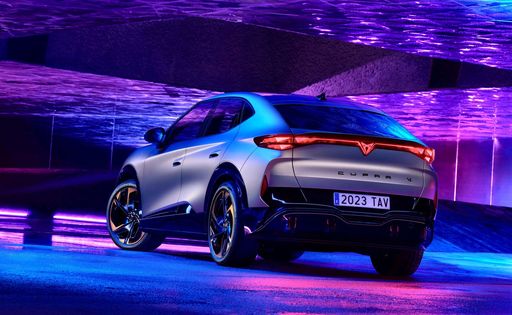 @ seat-mediacenter.com
@ seat-mediacenter.com
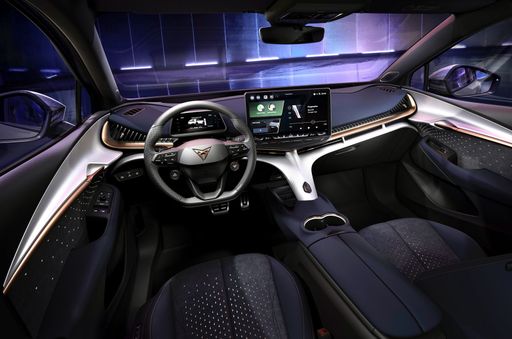 @ seat-mediacenter.com
@ seat-mediacenter.com
Ford Transit Bus
The Ford Transit Bus is renowned for its robust performance and spacious interior, making it an ideal choice for both commercial and personal use. With its efficient handling and modern design, it effortlessly combines practicality with comfort. Its adaptability and versatility ensure it meets the demands of various driving needs, from urban transport to long-distance journeys.
details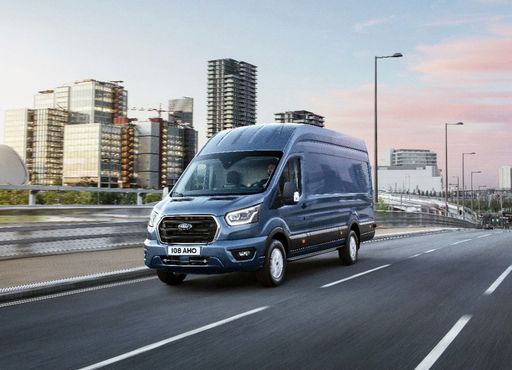 @ media.ford.com
@ media.ford.com
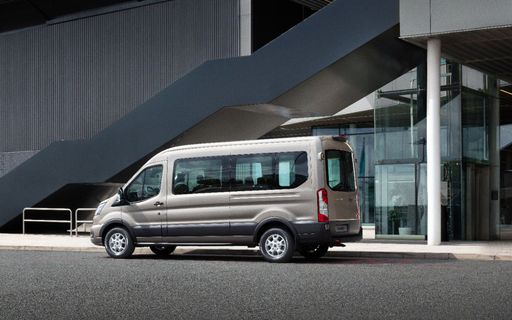 @ media.ford.com
@ media.ford.com
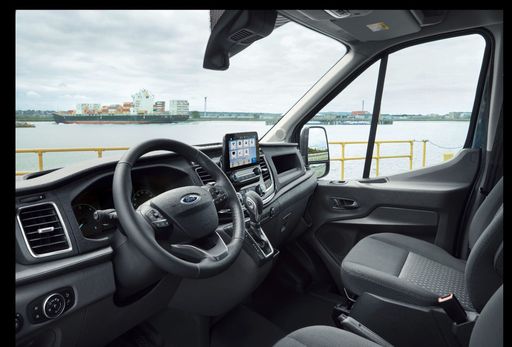 @ media.ford.com
@ media.ford.com

|

|
|
|
|
Costs and Consumption |
|
|---|---|
|
Price
45600 - 49600 £
|
Price
50500 - 52900 £
|
|
Consumption L/100km
-
|
Consumption L/100km
9.4 - 9.5 L
|
|
Consumption kWh/100km
15.2 - 16.5 kWh
|
Consumption kWh/100km
-
|
|
Electric Range
522 - 570 km
|
Electric Range
-
|
|
Battery Capacity
77 kWh
|
Battery Capacity
-
|
|
co2
0 g/km
|
co2
245 - 248 g/km
|
|
Fuel tank capacity
-
|
Fuel tank capacity
70 L
|
Dimensions and Body |
|
|---|---|
|
Body Type
SUV
|
Body Type
Bus
|
|
Seats
5
|
Seats
9
|
|
Doors
5
|
Doors
4
|
|
Curb weight
2178 - 2273 kg
|
Curb weight
2338 - 2385 kg
|
|
Trunk capacity
540 L
|
Trunk capacity
0 L
|
|
Length
4644 mm
|
Length
5531 - 5981 mm
|
|
Width
1861 mm
|
Width
2059 mm
|
|
Height
1597 mm
|
Height
2530 - 2533 mm
|
|
Payload
507 - 522 kg
|
Payload
1115 - 1162 kg
|
Engine and Performance |
|
|---|---|
|
Engine Type
Electric
|
Engine Type
Diesel
|
|
Transmission
Automatic
|
Transmission
Automatic
|
|
Transmission Detail
-
|
Transmission Detail
Automatic Gearbox
|
|
Drive Type
Rear-Wheel Drive, All-Wheel Drive
|
Drive Type
Front-Wheel Drive
|
|
Power HP
286 - 340 HP
|
Power HP
130 - 150 HP
|
|
Acceleration 0-100km/h
5.5 - 6.8 s
|
Acceleration 0-100km/h
-
|
|
Max Speed
180 km/h
|
Max Speed
-
|
|
Torque
545 - 679 Nm
|
Torque
360 - 390 Nm
|
|
Number of Cylinders
-
|
Number of Cylinders
4
|
|
Power kW
210 - 250 kW
|
Power kW
96 - 110 kW
|
|
Engine capacity
-
|
Engine capacity
1995 cm3
|
General |
|
|---|---|
|
Model Year
2024
|
Model Year
2024
|
|
CO2 Efficiency Class
A
|
CO2 Efficiency Class
G
|
|
Brand
CUPRA
|
Brand
Ford
|
CUPRA Tavascan
Introducing the CUPRA Tavascan: The Future of Electric SUVs
The automotive industry is witnessing a revolution, and at the forefront is the CUPRA Tavascan, an electric SUV that promises to reshape the landscape of sustainable driving. As a brand under the umbrella of the renowned SEAT, CUPRA has rapidly established itself with models that combine dynamic design with cutting-edge technology. Let us delve into the details of the Tavascan, an embodiment of innovation and performance.
Powertrain and Performance
The CUPRA Tavascan impresses with its electric powertrain offerings. It is available in two versions, catering to different driving preferences. With power outputs ranging from 286 to 340 PS, the Tavascan ensures an electrifying drive on both rear-wheel and all-wheel-drive configurations. Regardless of the choice, instant torque and seamless acceleration allow it to reach 0-100 km/h in just 5.5 to 6.8 seconds.
Under the hood lies a sophisticated 77 kWh battery pack, ensuring a driving range between 521 and 568 km on a single charge. The efficiency ratings are noteworthy, with energy consumption falling between 15.2 to 16.5 kWh/100 km, making it one of the more efficient options in its category.
Leading-Edge Technology and Features
The Tavascan is designed with the modern driver in mind, integrating state-of-the-art technology. Inside, drivers and passengers will experience a premium digital cockpit, where a large infotainment system, customisable ambient lighting, and cutting-edge connectivity options create a seamless blend of luxury and functionality.
In terms of safety and driver assistance systems, the Tavascan does not disappoint. It includes advanced features such as adaptive cruise control, lane-keeping assist, and traffic sign recognition, positioning it as a leader in automotive safety.
Sustainable Design and Practicality
The exterior design of the CUPRA Tavascan is striking, with aerodynamic contours that speak of its performance capabilities. Its aesthetic is both muscular and refined, underscoring CUPRA’s commitment to sporty elegance. The SUV's dimensions allow for a spacious interior, accommodating up to five passengers comfortably, alongside a generous 540-litre boot capacity.
Cost Efficiency and Environmental Impact
Operating costs are a critical consideration for any vehicle, and the CUPRA Tavascan excels in this department with monthly costs ranging from €1,280 to €1,424. The cost per kilometre also remains economical, thanks to its efficient energy consumption.
Further enhancing its appeal, the Tavascan proudly boasts a CO2 efficiency class of A, with zero direct emissions, reflecting CUPRA’s commitment to sustainability.
A Vision for the Electric Future
The 2024 CUPRA Tavascan embodies a bold vision for the future of automobiles. It combines state-of-the-art technology, outstanding performance, and an environmentally conscious footprint, setting new standards for electric SUVs. Whether you're an eco-conscious driver or a tech enthusiast, the Tavascan offers a compelling package that is hard to overlook.
Ford Transit Bus
The Versatile Ford Transit Bus from Ford
The Ford Transit Bus has always been a leader in the category of commercial passenger vehicles, and the 2024 model continues this legacy with a blend of reliability, innovation and modern design. With a range of configurations, the Ford Transit Bus is aimed at meeting the needs of businesses and individuals who require a spacious, dependable mode of transport.
Under the Bonnet: Technical Mastery
Power comes from a 2.0 EcoBlue diesel engine, available in power outputs of 130 and 150 PS. The engine is combined with an automatic transmission, ensuring a smooth drive even when fully laden. This Euro 6 compliant powerplant is designed for efficiency without sacrificing performance, sporting a fuel consumption range of 9.4 to 9.5 L/100km and an associated CO2 output of 245 to 248 g/km. Such numbers ensure that the Ford Transit Bus strikes a balance between power and economy.
Room to Spare: Exceptional Capacity and Comfort
The Ford Transit Bus is not just about getting from A to B; it’s about transporting passengers with utmost comfort. Depending on the specifications, the bus can accommodate between eight to nine passengers. The spacious interior is accompanied by an array of comfort features under the ‘Trend Automatik’ trim level, offering a practical and enjoyable ride experience for both drivers and passengers alike.
Dimensions and Practicality
Designed with practicality in mind, the Ford Transit Bus boasts dimensions that are fully suited to a variety of professional needs. Its length ranges from 5531 to 5981 mm, with a consistent width of 2059 mm and a height range from 2530 to 2533 mm. This translates to a generous loading capacity with a payload ranging from 789 to 1162 kg, making it a versatile option for businesses requiring ample cargo space alongside passenger accommodation.
Advanced Technology for Modern Roads
Aside from its primary function as a people mover, the Ford Transit Bus also shines with its technological prowess. It integrates advanced driver assistance systems aimed at ensuring both active and passive safety. This includes features that help drivers navigate through complex traffic situations and ensure maximum safety for all passengers.
A Smart Investment
The Ford Transit Bus is a competitive contender in its segment, offering not just performance and reliability but also reasonable costing. With monthly running costs ranging from €1,654 to €1,730 and cost per kilometre between 66.2 and 69.2 cents, businesses can expect an affordable operation without unexpected hikes in upkeep costs.
In conclusion, the Ford Transit Bus remains a clear front-runner among its peers, offering a combination of cutting-edge technology, impressive fuel efficiency, and a spacious, comfortable interior. Whether you are looking to enhance your fleet or need a robust transport solution, the Ford Transit Bus is a sound choice for the discerning buyer in 2024.
Which drive types are available for the CUPRA Tavascan?
Available as .
The prices and data displayed are estimates based on German list prices and may vary by country. This information is not legally binding.
